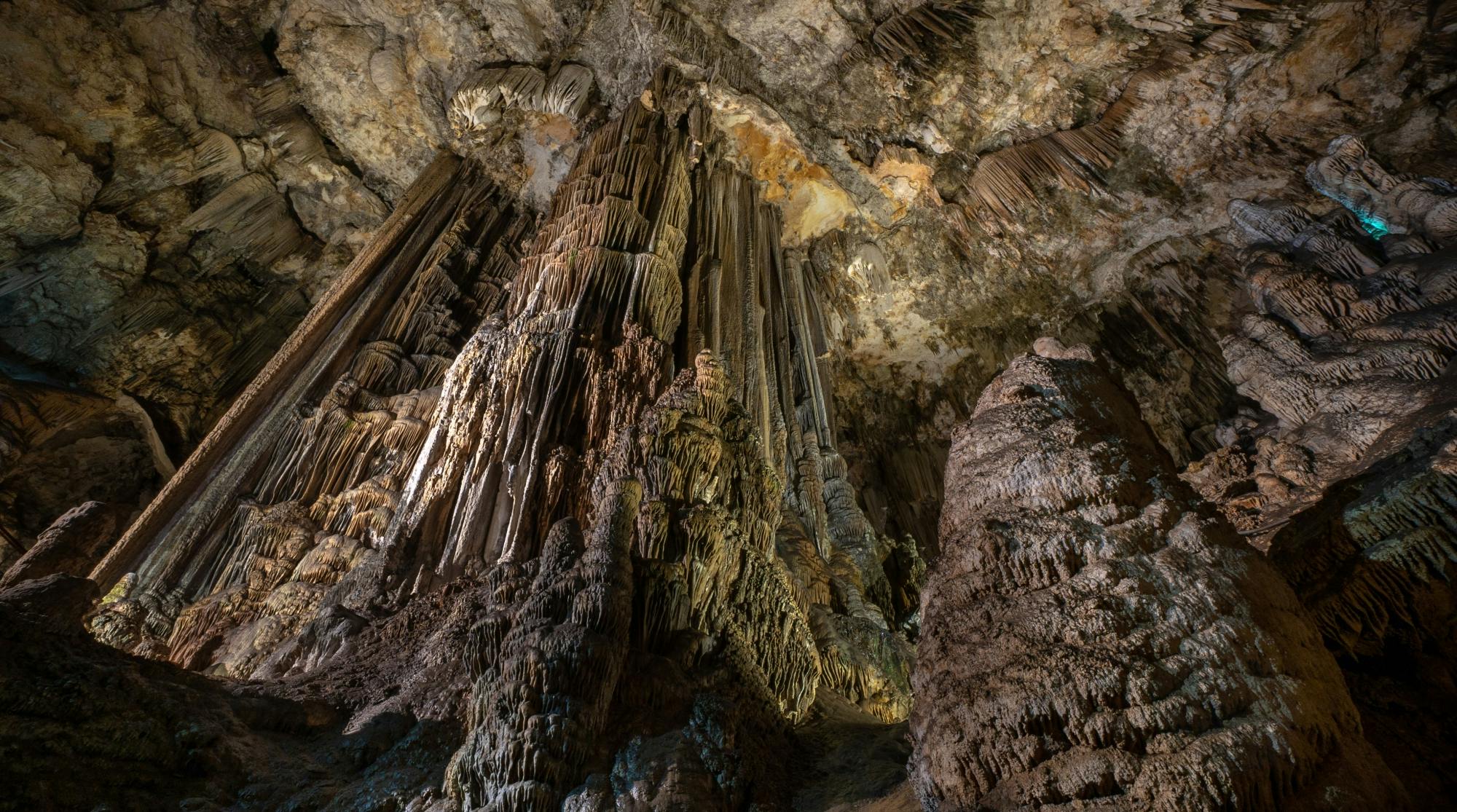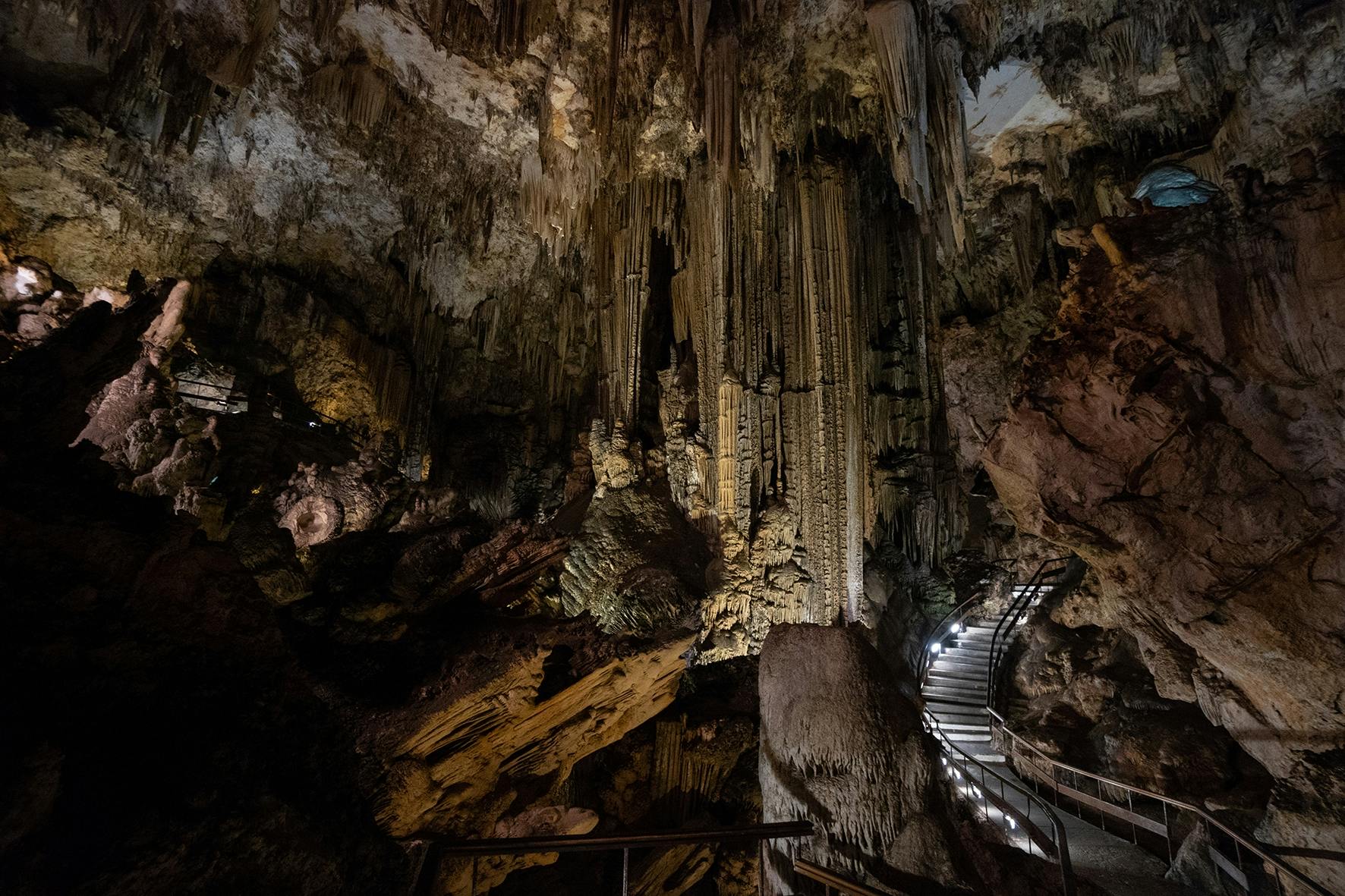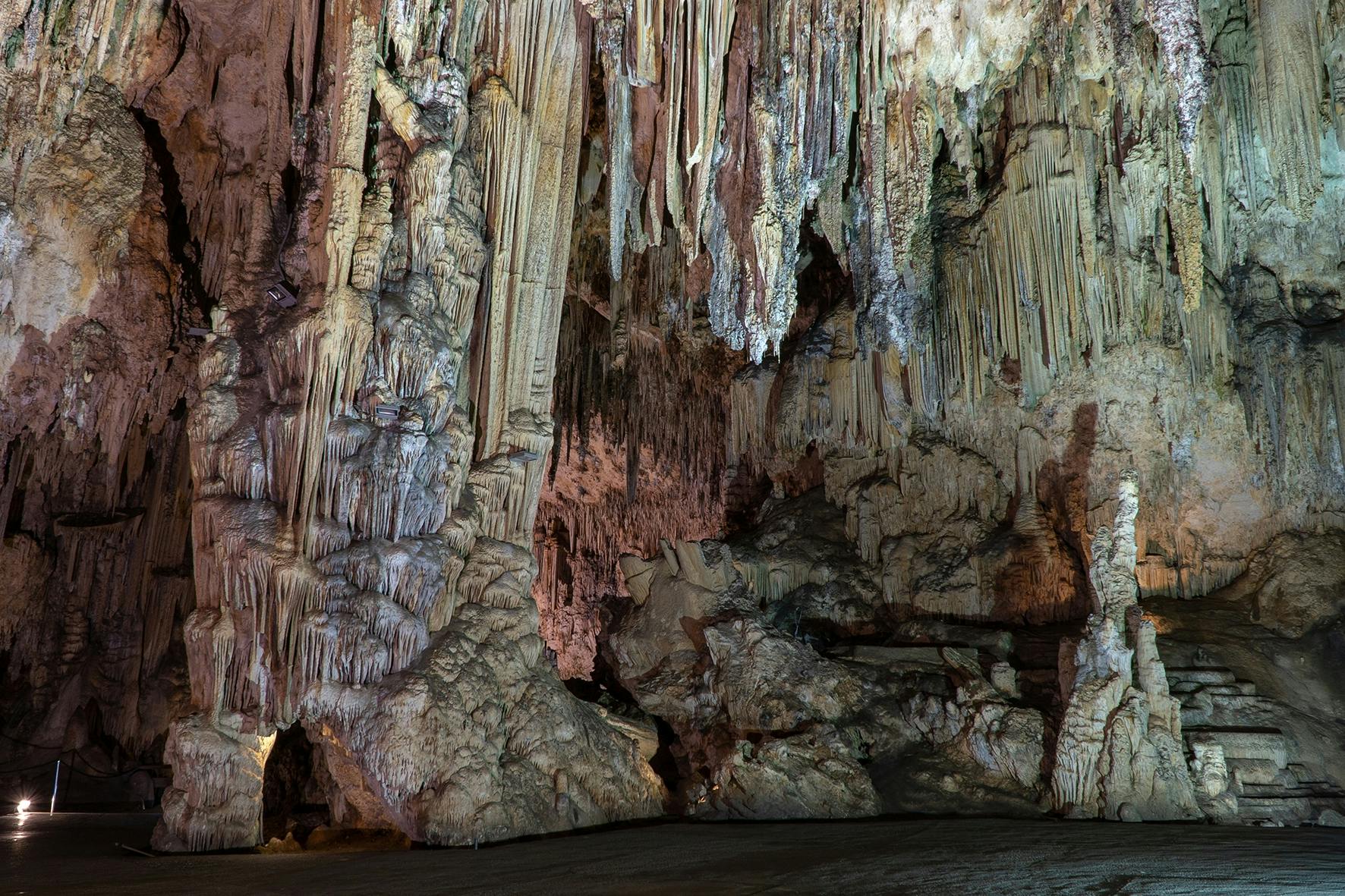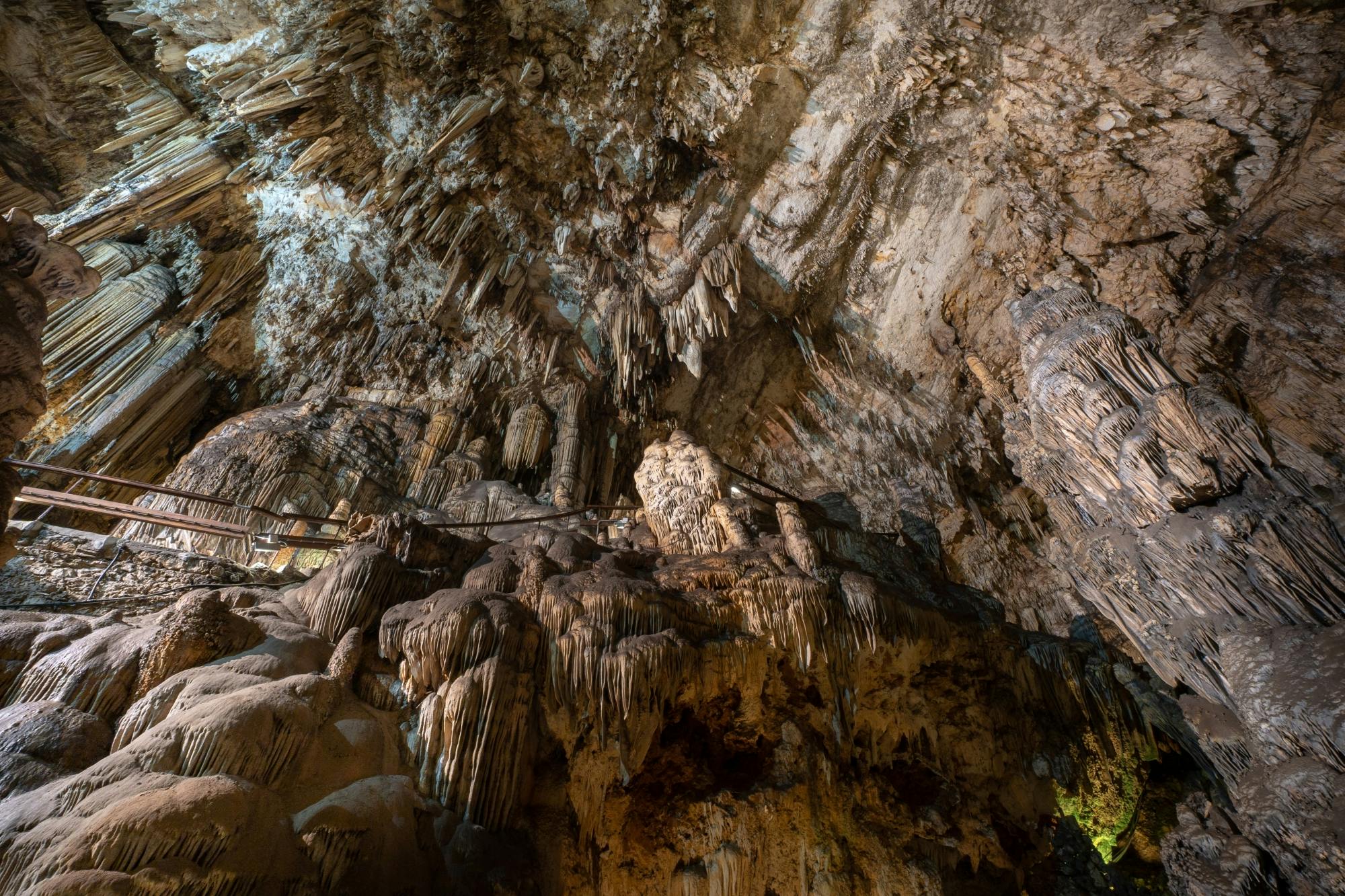The Nerja Cave, declared an Asset of Cultural Interest in 2006, is a natural monument of significant topographical development in Andalusia. Spanning 4,823 meters, its expansive chambers and galleries cover a volume of approximately 300,000 m3 and a surface area of around 35,000 m2. The cave is divided into two distinct sectors: the tourist galleries, which are open for visitors, and the High Galleries and New Galleries, which are not accessible to the public.
The Tourist Galleries include several visitable rooms such as the Lobby, Bethlehem, Waterfall or Ballet, Ghosts and Cataclysm. The Nerja Cave was discovered on January 12, 1959 by five boys who were chasing bats: José Luis Barbero, brothers Manuel and Miguel Muñoz, Francisco Navas and José Torres. This discovery significantly impacted the history of tourism in Spain. However, it's more accurate to say that the cave was rediscovered, as archaeological excavations reveal that it was used by human groups during Prehistory.
Your ancestors would have used the cave as a shelter and dwelling place, where they could rest and carry out their daily activities. The deepest parts of the cave were utilised for creating cave paintings and engravings (which are not visible during the visit due to conservation reasons). It also served as a burial site.









